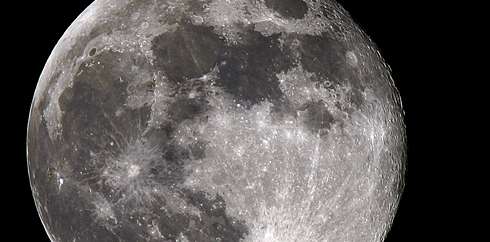Meteorites expose Moon surface formation

Lunar meteorites contradict a theory of how the Moon's crust formed, originally based on Apollo mission samples.
The composition of Moon rocks brought back by the Apollo astronauts led to the theory of a largely molten early Moon that cooled to form a global crust. New evidence from lunar meteorites paints a more complex picture.
The Apollo samples were collected from the 'near' side on the Moon, the side permanently turned towards Earth, whereas lunar meteorites found on Earth likely include more of the Moon's surface.
A new analysis of lunar meteorites led by Museum expert Prof Sara Russell shows the Moon's surface is much more variable than earlier studies of the Apollo samples suggest.
'This very careful and detailed study of two meteorites has given clear evidence that the elegant older model of how much of the Moon's crust formed is much too simplistic,' said Museum co-author Anton Kearsley.
Complicated crust
Prof Russell and colleagues analysed crystals of the lunar crust preserved in meteorites to determine their chemical make-up.
Subtle but very significant differences were found between the meteorites and the Apollo samples and between different meteorites, suggesting the lunar crust did not form from a common source.
Combined with data from other researchers detailing a wide variety of ages for lunar crust relics in meteorites, the data challenge the assumption that a global magma ocean on a largely molten early Moon was the predominant source of all the light lunar crust that we see today.
'This strongly suggests that the Moon's pale crust developed by the addition of new material and the reworking of old material, over a much longer time than we used to think,' said Kearsley.
Dynamic surface
Instead of a global magma ocean, there may have been a long series of melting processes that produced similar, but not identical, materials in different regions of the Moon.
It is also possible that the intense impact bombardment by asteroids left over from the formation of the solar system may have created regional melting spots in the surface crust of the still-warm early Moon. These pockets would now show slightly different chemical compositions.
The paper is published today in a special issue of the journal Philosophical Transactions of the Royal Society A dealing with the origins of the Moon.
More information: Philosophical Transactions of the Royal Society A, rsta.royalsocietypublishing.or … 24/20130241.abstract
Journal information: Philosophical Transactions of the Royal Society A
Provided by Natural History Museum



















